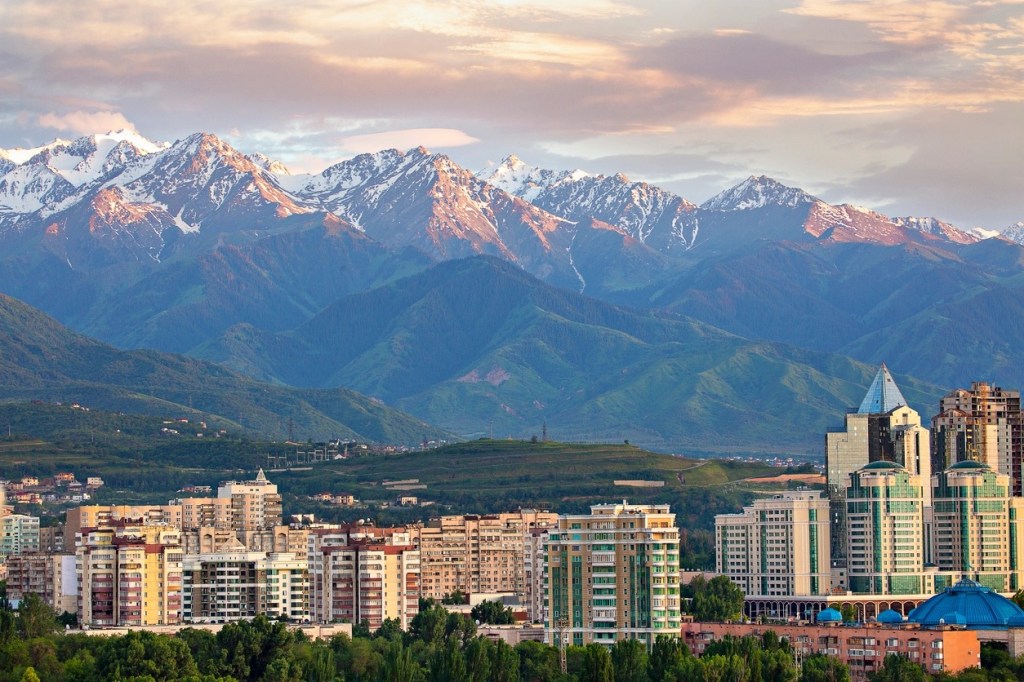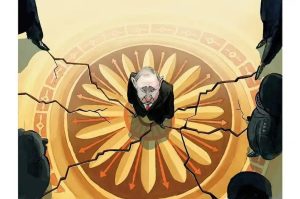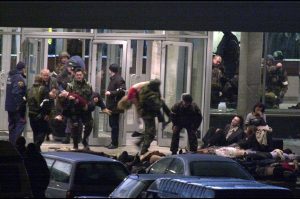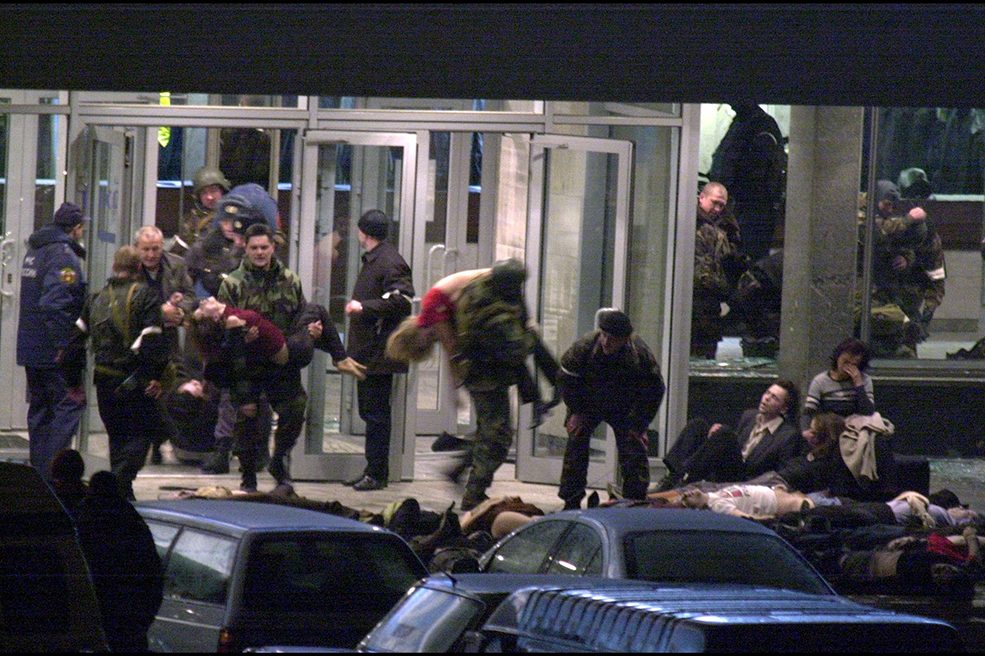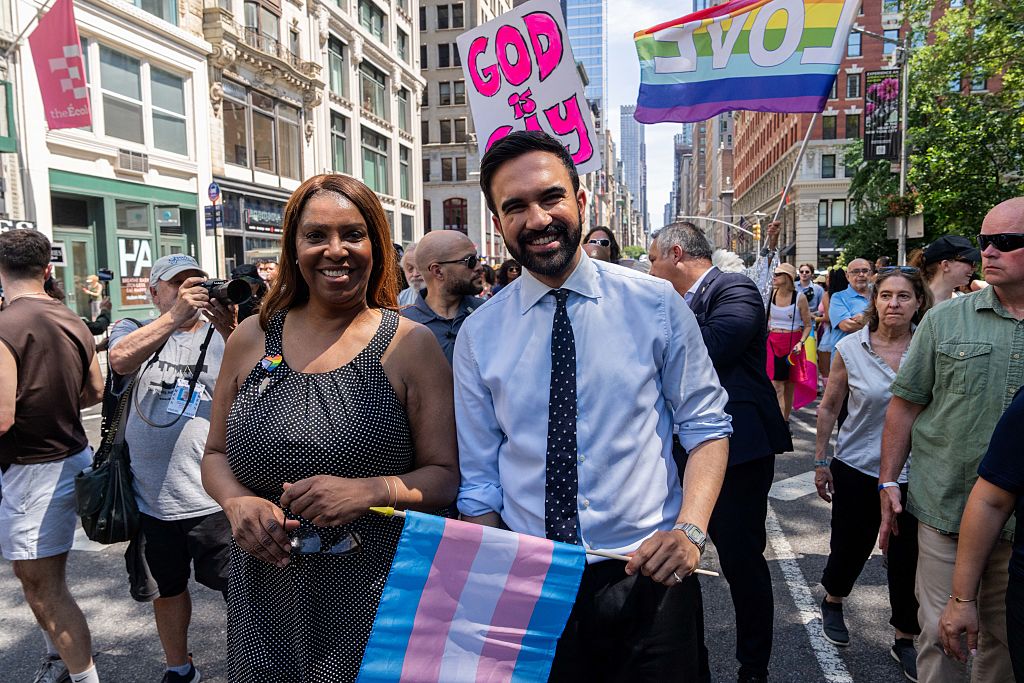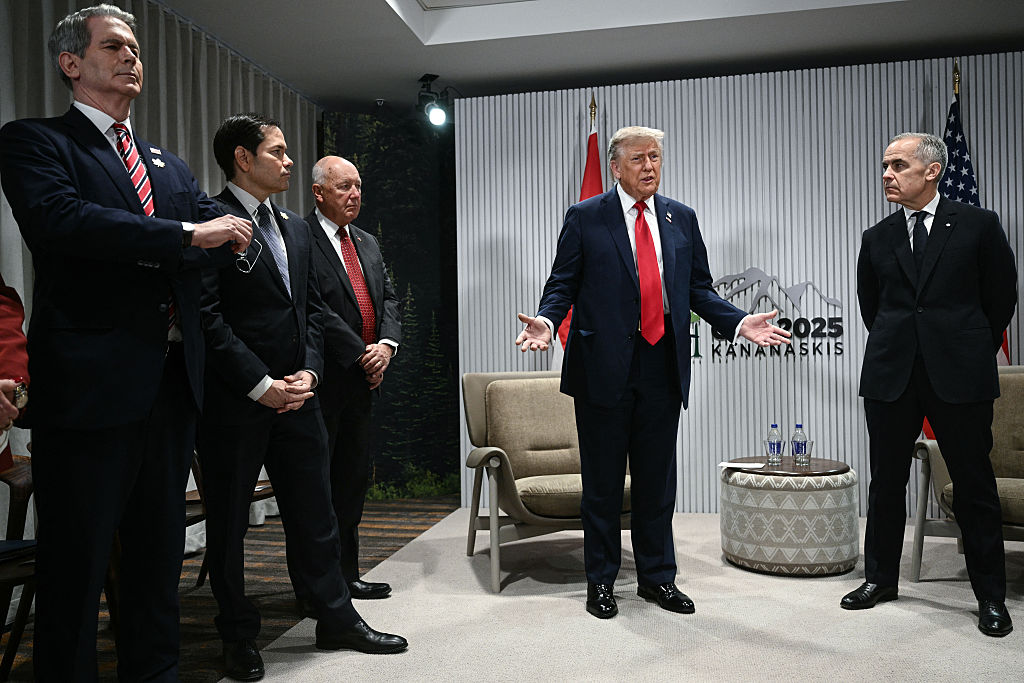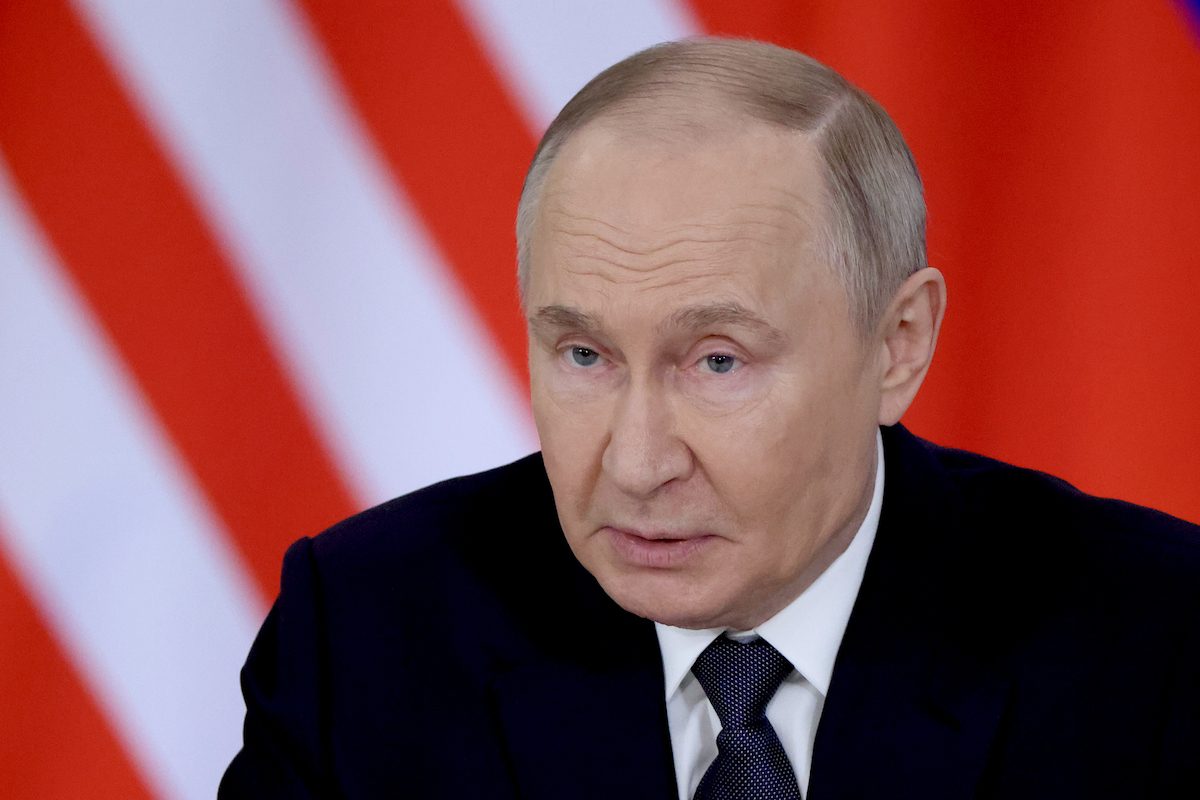Prior to Russia’s invasion in February 2022, few westerners knew much about Ukraine — and even less about Kazakhstan. We all suffer from Moscow-centered perceptions and the bad habit of equating the Soviet Union with Russia.
But now we know that Putin is driven by spurious historical theories, in which Ukraine has no right to exist, one needs to ask how they might apply to other ex-Russian provinces. Nowhere is more affected than European Russia’s eastern neighbor, Kazakhstan, which separates Muscovy from China, in the same way that Ukraine and Belarus divide it from the EU and NATO.
Ukraine is half as big again as France or Germany. But “KZ” dwarfs it. From end to end, Kazakhstan covers the same space as from Portugal to Poland. Yet this vast land contains only 19 to 20 million people.
Like Ukraine, Kazakhstan has a turbulent and tragic history. The part of Central Asia yet to be called Kazakhstan was conquered by Czarist Russia in the late eighteenth and nineteenth centuries. Like the North American “frontier,” it was dominated by a network of military forts and cavalry trails. But, unlike the Midwest or Canada, it was not settled by overwhelming numbers of Europeans. A grand assortment of largely Turkic-speaking, Asiatic nomads roamed the steppe, living in yurts and tending their herds of sheep and horses. The Kazakhs were but the largest group amongst Kirghiz, Uzbeks, Turkmens, Nogay, Tatars and many others.
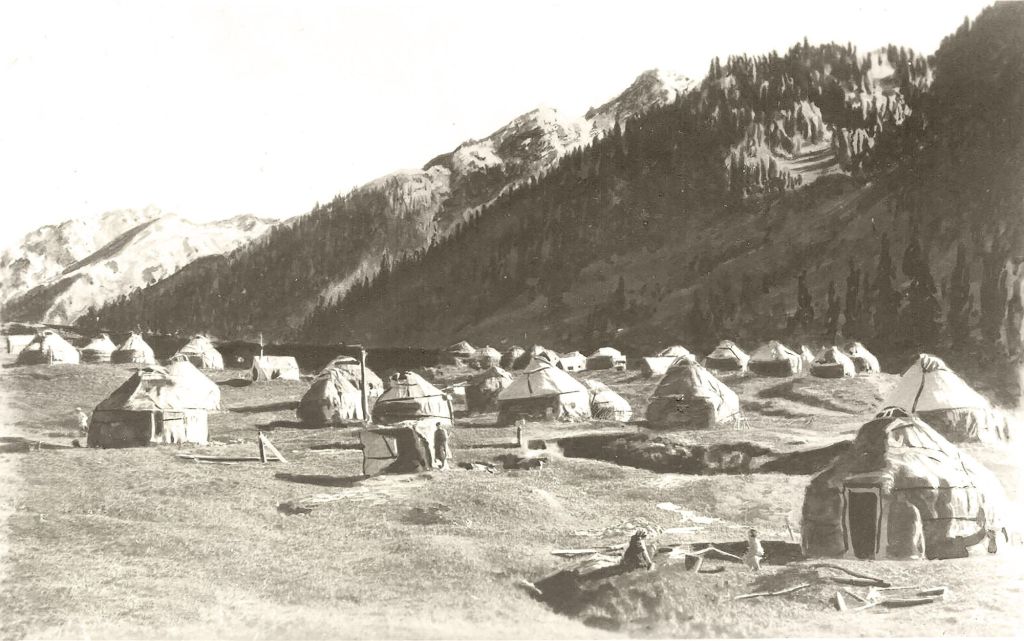
After the revolutions of 1917, Central Asia broke free, as did all of the empire’s non-Russian regions. In December 1917, a regime was set up under the misleading title of the
“Alash Autonomy,” whose ruling Alash Party had been recognized by Russian Provisional Government. Based in Orenburg on the Ural — the original Cossack stronghold for the conquest of Central Asia — it was in fact independent, since the Bolsheviks were otherwise engaged. Like independent Ukraine, it survived from 1917 to 1920, under the writer-cum-politician, Alikan Bokeikhanov.
Duly annexed by the Bolsheviks, the nascent state was again misnamed, this time as the “Autonomous Soviet Socialist Republic of Kirghizstan,” with its capital in Kyzylorda in the south of the country. The misnomer indicated the region’s lack of identity, only rectified in 1925, when Kirghizia was hived off, and the Kazakh ASSR emerged with its own capital in Almaty, which means “father of the apple.”
The principal figure in that era was the murderous Shaya “Filip” Goloshchyokin, the very man who had urged Lenin to kill the Czar’s family and had personally overseen their assassination.
As in Ukraine, Bolshevik policy in the 1920s combined ruthless political controls with limited measures of cultural relaxation. The Kazakh language was standardized and taught in schools. A new generation was trained and educated in their native language.
In 1929, however, disaster struck in the form of Stalin’s compulsory collectivization of agriculture. The scheme, designed to turn peasants into state-owned serfs, did not suit nomads with no experience of farming. The Kazakh famine raged for three years, and saw millions perish. Sometimes called the “Goloshchyokin genocide,” it consumed fewer numbers than the Holodomor in Ukraine, but was enough to make the Kazakhs a minority in their own land.
In the 1930s, Kazakhstan was turned into a dumping ground for a massive assortment of deportees and exiled nations. Stalin’s fury was wreaked on millions of Ukrainians, Poles, Volga Germans and Koreans considered unreliable, who were uprooted and sent to Kazakhstan wholesale amid oceans of tears and misery. The deportees helped to stabilize Central Asia’s demography, while leaving permanent traces in the diversity of the region’s physiognomy.
By 1936, Kazakhstan was upgraded to a union republic. Almaty, located on the newly opened “TurkSib” railway, was expanding. Yet the onset of Stalin’s purges, followed by the Great Terror prompted millions more deaths. At a stroke, the infant Kazakh Communist party was decimated, and the first generation of educated Kazakhs annihilated. Having been the gay lover of the NKVD chief Nikolai Yezhov, the architect of the Kazakh famine, Goloshchekin, escaped for a time, until both men were despatched by Beria.
During the Great Patriotic War of 1941-44, Kazakhstan lay far behind the frontline. It was used to relocate hundreds of factories and hundreds of thousands of Slavic workers from further west, thereby boosting both industrialization and the European population. A flood of fresh-faced Central Asian conscripts ensured the Red Army’s ability to lose three soldiers for every German killed and still emerge victorious.
Kazakhstan’s hectic postwar economic development was accompanied by intense Russification. Stalin had decreed that Russian should be the sole language not only of intercommunal communication but also henceforth of science, maths, economics and higher education. Social advancement, therefore, depended on speaking Russian. And, as reported, Russian teachers showed no mercy. “Why do you speak the language of animals,” they would say; “you should speak the language of humans.” Over thirty to forty years, all educated Kazakhs became bilingual. No one counted the costs. Kazakhstan was also used in this period for nuclear testing sites.
Nonetheless, as the Five Year Plans unfolded, mining and manufactures surged. Nature had endowed Central Asia with enormous mineral wealth. Karaganda produced coal, Temirau steel, Zhezkazgan copper, Taraz phosphorus, Tengiz oil and Karachaganak gas. The Soviet cosmodrome, home of the Sputniks, was opened at Baikonur. Agriculture prospered less. Spurred by earlier disasters, Nikita Khrushchev planned the grandiose Osvoyenie Tseliny, “the Taming the Bush,” otherwise known as the “Virgin Lands Campaign.” An area of wild steppe the size of England was put to tractors and plows. Komsomol volunteers flocked in from Russia. Then, after one or two bumper harvests, the whole scheme failed amid droughts, incompetence and inadequate infrastructure.
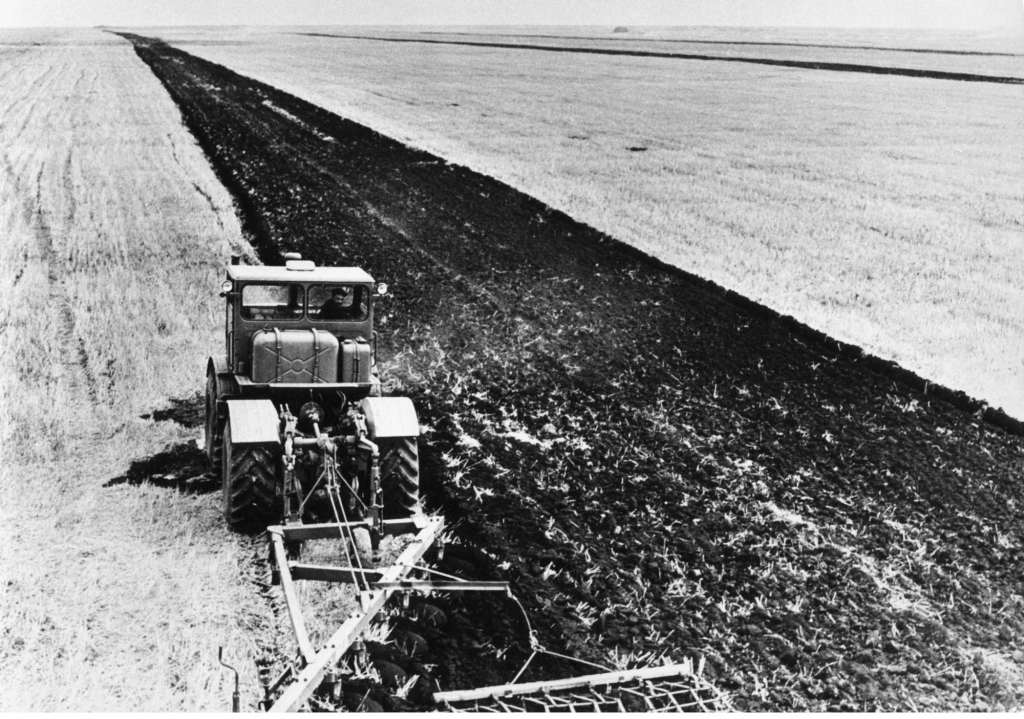
Meanwhile, the cadres of the local Kazakh Communist Party were infiltrated by ambitious, line-toeing non-Russians. Briefly, in 1955-56, Leonid Brezhnev was in charge in Kazakhstan. But later the first secretary post was held for twenty-two years by Brezhnev’s protégé, Dimash Kunaev, and from 1986 by Nursultan Nazarbaev. Under the class-bound Soviet social system based on Party membership, all responsible posts were reserved for “comrades,” who were given privileged access to housing, consumer goods, cars, vacations and superior health and education. Ordinary citizens were left to languish and conform.
In the late 1980s during the crisis provoked by Gorbachev’s breakneck reforms, Nazarbaev belonged to the conservative faction looking for measured change. But the conservatives lost out thanks to “intensified perestroika” and a failed coup in Moscow in 1991. Yeltsin and others aiming to dissolve the Soviet Union stepped in. On December 16, Kazakhstan meekly declared for independence, the last Soviet republic to do so. By the year’s end, the USSR had ceased to exist.
Independence brought all manner of problems. Orders, plans and policies no longer flowed from “the Center.” Nazarbaev became a “dog without a master.” He responded smartly by getting himself elected as Kazakhstan’s president and overturning the first democratic constitution. In due course, he launched a one-party state based on his own personality cult and the “soft authoritarianism” of his Nur Otan or “Light of the Fatherland” Party. Kazakhstan was not alone in accepting the dictatorship of an ex-communist boss.
Yet new horizons beckoned. The mass exodus of many Russians, especially from the ruling nomenclatura, left Kazakhs firmly at the helm in their own country. The ideological vacuum was filled by a brand of Kazakh nationalism, in which multicultural and multilingual values dominated in politics, and national state capitalism dominated in economics. Freedom of religion returned, both to the majority of mild Sunni Muslims, and to Orthodox Christians, who were given a non-Muscovite patriarch. A new capital was built at Astana (now Nur-Sultan) amid space-age architecture. The country’s huge reserves of minerals, uranium, oil and gas were further mobilized. A national airline, Air Astana, took to the skies, equipped with the most modern planes. As geopolitics shifted, close relations were opened with the immediate eastern neighbor, China, which was rapidly emerging as the world’s second superpower; support was given to China’s “Belt and Road” scheme. A self-confident diplomatic establishment embarked on a career of international arbitration, notably in the Syrian conflict. In 2019, the aging Nazarbayev, now the Elbasy or “Father of the Nation,” finally made way for a hand-picked successor, Kassym-Jomart Tokayev, a Moscow-educated sinologist, while retaining chairmanship of the Security Commission.
Spontaneous unrest erupted three years later in January 2022. Demonstrators in Zhanaozen protested the hike in gas prices. But protests spread and turned violent. Almaty’s city hall was set on fire. Policemen were killed amid shouts of “Shal Ket,” or “Old Man Out.” A fossilized nepotic elite, which had plundered the country’s wealth, was losing control. Tokayev denounced the “terrorists,” called in the forces of the Russian-led Treaty of Collective Security (CIS) and persuaded the Elbasy to retire. Three thousand Russian paratroopers restored order, as 20,000 demonstrators and dissidents were arrested. Kazakhstan was acting as all good Russian satraps are expected to do.
Then, in February 2022, Russian forces invaded Ukraine, and a none-too-subtle shift occurred overnight. Putin had broken the golden rule of all mafia set-ups, namely that the bosses must guarantee protection to the foot soldiers. Instead, he had aroused fear in all of Russia’s former underlings. Kazakhs were instantly reminded of Goloshchekin, of Stalin and the lost generations. Tokayev signally failed to praise the invasion, declaring for strict neutrality. He refused to recognize the Donetsk and Luhansk pseudo-republics, or the illegal annexation of Crimea and the other occupied Ukrainian oblasts. At a meeting in Samarkand of the Chinese-led Shanghai Co-operation Organization (SCO), Putin was mildly rebuked, and saw that Tokayev was not isolated. Indications surfaced that the Kazakh diaspora in Ukraine was backing resistance to Russia.
Whatever the Kremlin makes of trends and shifts in Central Asia is not an open book. But some salient points can hardly be in doubt.
Firstly, since nationalists rarely mix well with other nationalists, it is unlikely that Putin and his cronies rate Kazkhstan’s leaders highly; they probably think of them as ungrateful provincial upstarts, who benefited from Russia’s post-Soviet misery. Secondly as neo-imperialists, with a strong tinge of right-wing “Eurasianism,” one can be sure that Team Putin places Kazakhstan firmly in the so-called “Near Abroad,” the purported sphere of influence beyond the frontiers in which nobody is supposed to meddle with Russia’s interests. (Kazakhstan does not have the right to its own Near Abroad.) Also, the present lords of the Kremlin will have inherited a hierarchical view of nations, cultures and races, in which assorted Kazakhs, Kirghiz, Turkmens or Uzbeks cannot easily be imagined as anything but inferiors.
Thirdly, as creatures of the Petersburg mafia and of the KGB, Putin’s circle will by definition be acutely suspicious of rival outfits with similar roots. They have no respect for proprieties, for international law, for democratic norms or decency. All they care about is what Khrushchev once summarized in two words: kto kavό, “who [controls] whom.”
Once upon a time, Vladimir Putin may well have put Kazakhstan high on his list of delinquents awaiting retribution. For him Baikonur can be no less precious than Sevastopol, and preparatory hints have already been dropped about ethnic Russians suffering discrimination. Yet the time for such dreaming has passed. Having flexed his muscles in Ukraine, and done it so feebly, Putin has put all the ex-Soviet republics on their guard. If Moscow were to turn on them, the Russians would find not only that the Kazakhs have powerful friends, but also that China might now regard Central Asia as its “Near Abroad,” not Russia’s.
This article was originally published on The Spectator’s UK website.



